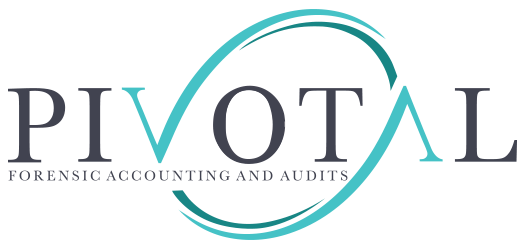The True Cost of Delayed Fraud Discovery: A Forensic Accountant’s Perspective
Local Fraud News:
Issaquah Police Arrest Local Woman for $630,000 Theft from Employer
On July 9, 2025, detectives with the Issaquah Police Department arrested a 57-year-old Issaquah woman for the theft of approximately $630,000 from her employer.
The investigation began in June 2025 when a local business reported concerns that an employee had been stealing funds by forging signatures on company checks. Detectives determined the thefts had been occurring since February 2018, with an estimated $10,000 being misappropriated each month.
News Source: https://www.issaquahwa.gov/civicalerts.aspx?AID=6143
The True Cost of Delayed Fraud Discovery: A Forensic Accountant’s Perspective
Introduction
When fraud involving hundreds of thousands of dollars—like a $600,000 loss—goes undetected for an extended period, the ripple effects extend far beyond the balance sheet. Forensic accountants play a pivotal role in not only uncovering these schemes but also minimizing damage and preserving the organization’s financial health.
Financial Impact: Not Just the Dollar Amount
-
Cash erosion & liquidity crunch
A $600K theft directly depletes operating funds, potentially disrupting payroll, vendor payments, capital projects, or emergency reserves. -
Incremental losses over time
Many fraudsters continue siphoning funds once undetected. Without early intervention, cumulative losses can double or triple the initial figure.
Asset Recovery: A Lengthy, Partial Journey
Recovering funds through courts—via restitution orders—is welcome, but reality often falls short:
-
Liquidation delays and shortfalls
Asset sales (homes, vehicles, jewelry) can take months or years. These items may sell below expected value, and legal fees eat into recovery. -
Dependence on collection mechanisms
Organizations must often engage collection agencies, facing arbitrary costs and uncertain timelines—sometimes chasing small client wage garnishments for pennies on the dollar. -
Partial restitution is the norm
Rarely does a victim receive the full amount owed. Courts usually prioritize the most recent debts, and bankruptcies or insolvency may leave little to recoup.
Recovering from a major fraud event is always more expensive, stressful, and time-consuming than preventing it. Let’s make sure your organization stays ahead of the risk–contact Pivotal Forensic Accounting & Audits for a risk assessment.
Operational and Reputational Fallout
-
Business disruption
Reallocating staff to investigations, building new controls, and rebuilding internal trust can derail strategic initiatives and strain resources. -
Stakeholder confidence shaken
Investors, donors, customers, or employees may grow wary after high-profile losses. Recovering reputation takes time—rebuilding trust is neither quick nor assured. -
Insurance complications
Claims under crime or fidelity bonds require proof of discovery timing. Delays may reduce coverage recoveries or jeopardize claim validity.
Compliance, Controls & Forensic Accounting Strategy
Early detection is everything. Here’s how a business working with a forensic accountant can mitigate risks:
| Strategy | Description |
|---|---|
| Data analytics | Monitor expense patterns, vendor activity, and transaction anomalies in real-time. |
| Segregation of duties | No single individual controls a process end-to-end—minimizes concealment opportunities. |
| Anonymous reporting channels | Fraud hotlines can prompt whistleblowers to surface suspicious behavior early. |
| Proactive forensic reviews | Periodic audits—especially in high-risk areas—help catch improper transactions before escalation. |
Recovery vs. Prevention: A Cost-Benefit Analysis
-
Recovery is reactive. Although recovering $600K is significant, the process is resource-intensive, often yields only a portion of losses, and may take years.
-
Prevention is proactive. Investments in internal controls, analytics, and staff training can prevent fraud from occurring in the first place—often saving multiples of the initial loss over time.
Real-World Scenario: The $600K Case
Once the “dust” settles, the criminal investigation and court proceedings finalize, the courts mandate restitution.
However:
-
Asset liquidation remains ongoing and will likely cover only a fraction of the debt.
-
Court oversight and payment schedules create delays—not to mention administrative costs and fees.
-
Collection agencies will need to track reluctant payers, often long after the offender has moved or under financial duress.
All told, it could take three to five years before any meaningful recovery is achieved—if ever fully realized.
Conclusion
Forensic accountants must champion aggressive early detection measures and robust internal controls. Recovering a large-scale fraud case after it’s come to light certainly shows effectiveness—but it’s a reactive triumph. The real win lies in prevention: detecting fraud before it magnifies, preserving organizational resources, reputation, and trust.
Key Takeaways for “ANY” business in this situation:
-
Invest in real-time monitoring tools.
-
Conduct periodic, targeted forensic reviews.
-
Integrate strong controls and anonymous reporting mechanisms.
-
Educate stakeholders on recognizing fraud early.
-
View recovered funds as partial victory—with remediation and prevention always your priority.


